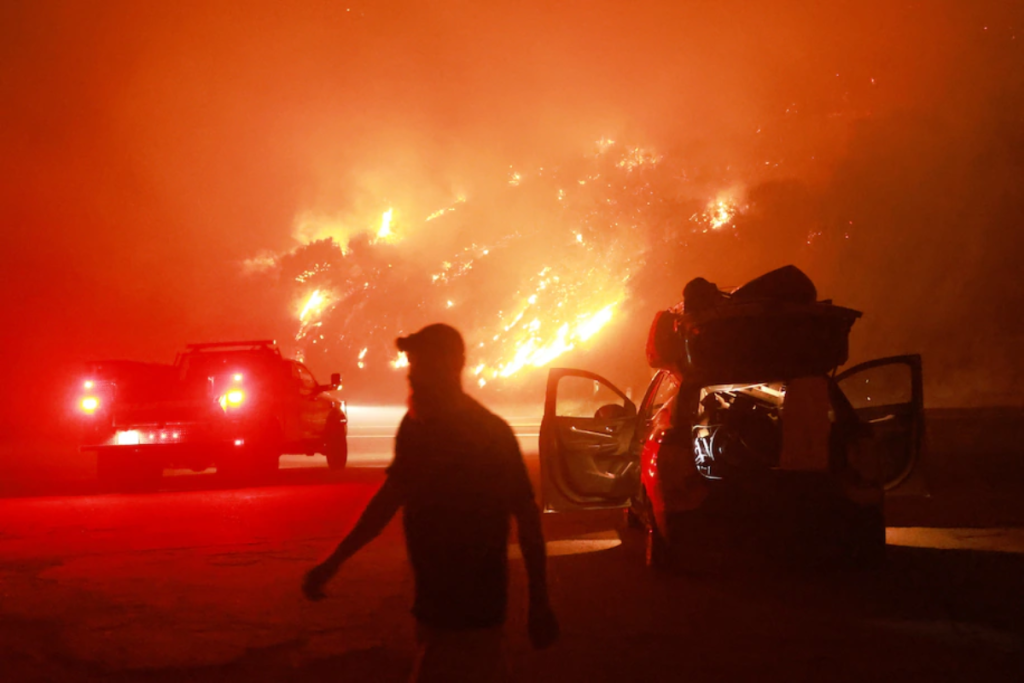
The western United States is grappling with severe wildfires, particularly in California, Nevada, and Oregon, where thousands of residents have been forced to evacuate. As of September 2024, over two million acres have burned across the region, exacerbated by relentless heatwaves and strong winds.
In California, the Line Fire, located near San Bernardino, has already scorched more than 25,000 acres, displacing thousands from their homes.
Also Read: Airport Fire in Orange County Forces Evacuations Amid Intense Heatwave
Mandatory evacuation orders have been issued for communities including Running Springs, Highland, and Angelus Oaks. Firefighters, numbering over 1,700, continue to battle the blaze under challenging conditions, with temperatures soaring above 100°F. California Governor Gavin Newsom has activated the National Guard to support firefighting efforts.
Meanwhile, in Nevada, the Davis Fire, located south of Reno, has consumed over 6,500 acres, with at least 14 structures destroyed. The situation remains dire, as the fire is currently 0% contained. The Nevada Army National Guard has deployed helicopters to assist in firefighting, and more than 12,000 residents remain under evacuation orders. Governor Joe Lombardo has declared a state of emergency to marshal additional resources.
In Oregon, the situation mirrors that of its neighboring states, with several fires burning across the state. These blazes have forced evacuations in rural areas and destroyed homes, as temperatures and wind patterns continue to pose significant challenges.
Related Story: Hawaii, one year after the disastrous Lahaina fire, is bracing for high wildfire danger
As firefighters work around the clock to contain the flames, the excessive heat and dry conditions are making their efforts all the more difficult. The National Weather Service has issued air quality alerts across the region due to the heavy smoke and fine particle pollution caused by the wildfires.
With no significant cooling in sight and thunderstorms potentially worsening the fires, the outlook for containment remains uncertain. Local authorities are urging residents to follow evacuation orders and remain vigilant as conditions evolve.
As the wildfire season progresses, it is clear that the combination of climate change, extended droughts, and extreme weather patterns will continue to fuel these destructive events across the western U.S., with communities bracing for further challenges in the weeks to come (KTVZ) (KTVZ).
